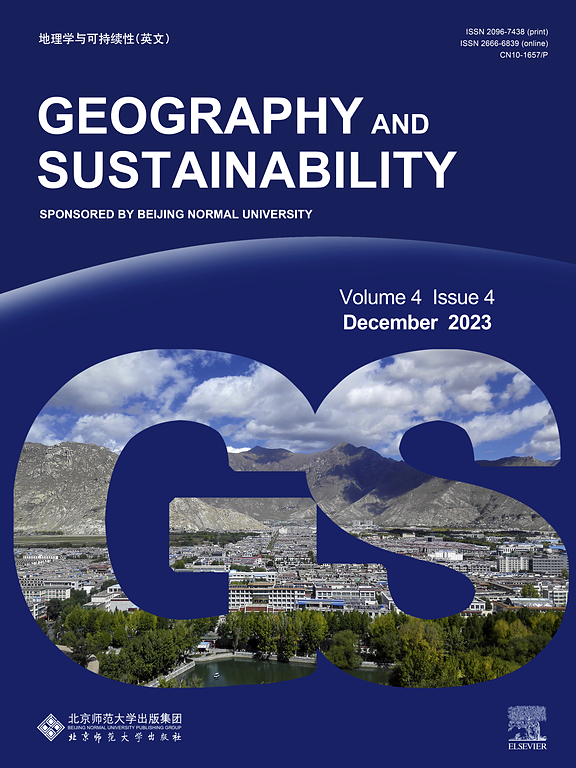Spatial mismatch between in-situ conservation and diversity hotspots of Chinese native useful vascular plants
IF 8
1区 环境科学与生态学
Q1 GEOGRAPHY, PHYSICAL
引用次数: 0
Abstract
China boasts over 10,000 native useful vascular plants (NUVPs), spanning eight families and serving twelve distinct uses. Given the importance of NUVPs, widely-confirmed in-situ conservation policies, such as establishing nature reserves, have been broadly implemented to protect them. However, the effectiveness of in-situ conservation efforts for NUVPs in China remains uncertain. Highlighting the importance of multi-family and multi-use plants, this research identified the spatial distribution pattern and diversity hotspots of NUVPs, evaluated the in-situ conservation effectiveness and provided the future conservation priority scheme. The results revealed that the spatial concentration of NUVPs is predominantly in the southwestern lowlands of China (< 3,000 m), peaking around 109°E and 25°N. Importantly, diversity hotspots exhibited a significant spatial mismatch (over 80 %) with the National Nature Reserve (NNR) network. Only about 17.7 % and 13.3 % of these hotspots are protected by NNR initiatives for endemic and nonendemic species, respectively. Additionally, the proposed Plants Conservation Effectiveness Index (PCEI) proved more representative in addressing the two main crises faced by the studied species—species loss and human pressure, and found a decline in conservation effectiveness as the number of uses increased. Finally, future conservation priorities based on the PCEI highlight the Nanling Mountains, Hengduan Mountains, Jiuwandashan, and Qilian Mountains as highly prioritized regions requiring focused efforts to address the impacts of climate change. Conversely, in sparsely distributed regions experiencing increasing human pressure, it is imperative to mitigate the expanding human footprint.

求助全文
约1分钟内获得全文
求助全文
来源期刊

Geography and Sustainability
Social Sciences-Geography, Planning and Development
CiteScore
16.70
自引率
3.10%
发文量
32
审稿时长
41 days
期刊介绍:
Geography and Sustainability serves as a central hub for interdisciplinary research and education aimed at promoting sustainable development from an integrated geography perspective. By bridging natural and human sciences, the journal fosters broader analysis and innovative thinking on global and regional sustainability issues.
Geography and Sustainability welcomes original, high-quality research articles, review articles, short communications, technical comments, perspective articles and editorials on the following themes:
Geographical Processes: Interactions with and between water, soil, atmosphere and the biosphere and their spatio-temporal variations;
Human-Environmental Systems: Interactions between humans and the environment, resilience of socio-ecological systems and vulnerability;
Ecosystem Services and Human Wellbeing: Ecosystem structure, processes, services and their linkages with human wellbeing;
Sustainable Development: Theory, practice and critical challenges in sustainable development.
 求助内容:
求助内容: 应助结果提醒方式:
应助结果提醒方式:


